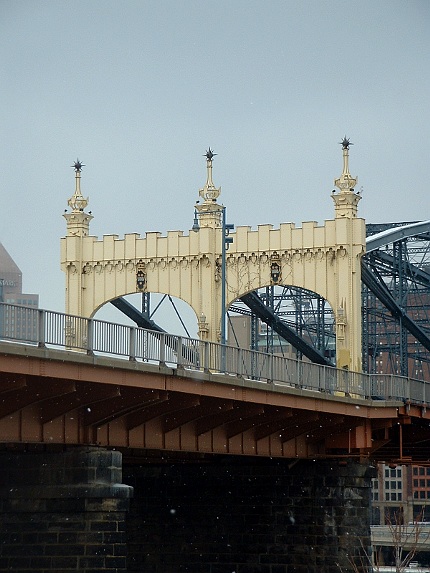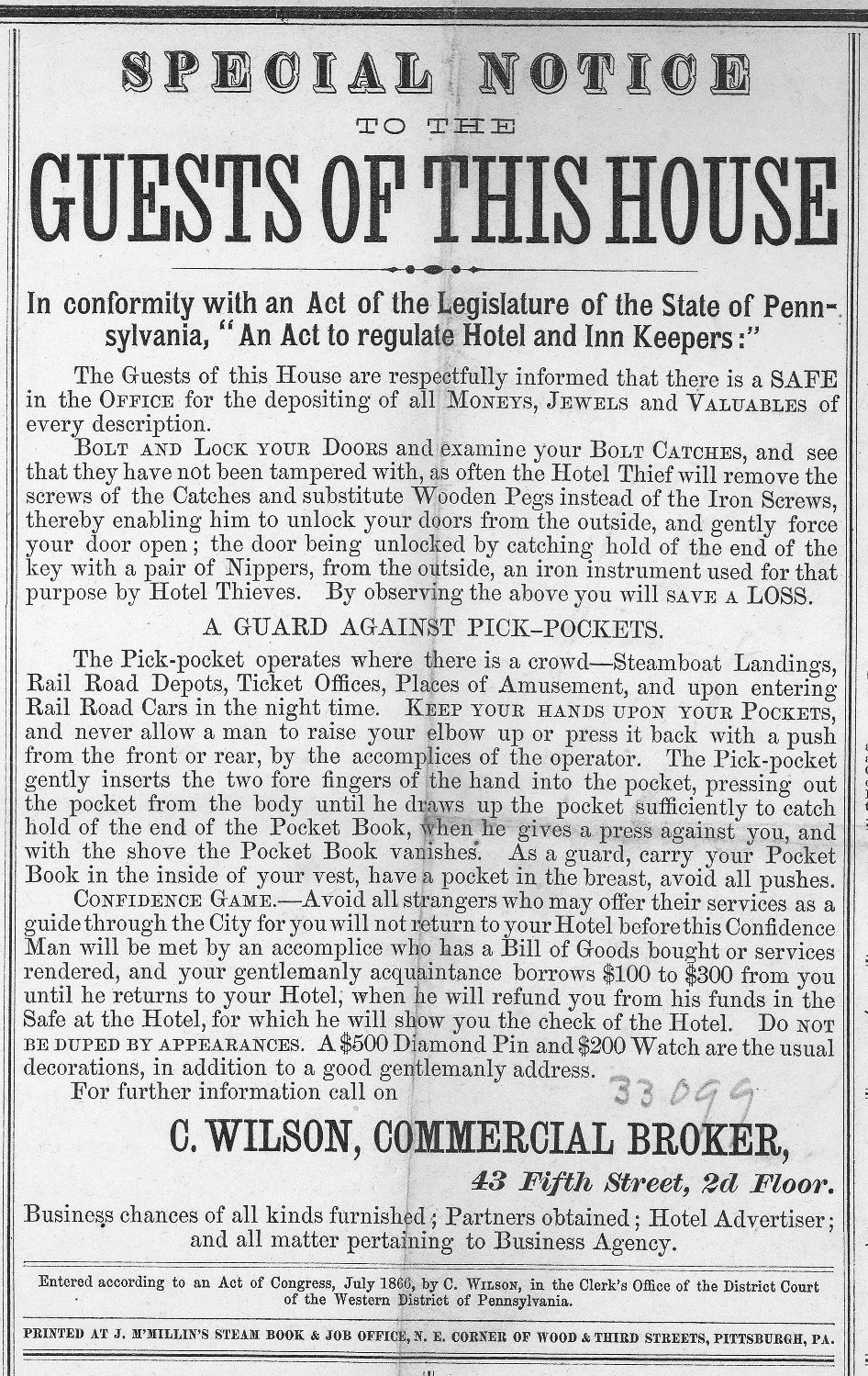
[Updated, with many thanks to “Mercator” for a helpful comment.] The 1915 gateway of the 1883 Smithfield Street Bridge, as seen through the snow of a January afternoon. The Pauli or lenticular truss is unusual; in Pittsburgh, with its more than 500 bridges, this is the only one. The oldest steel bridge in the United States, this was designed by Gustav Lindenthal, who knew a thing or two about bridges. The original span was half the width; for the better part of the twentieth century, the bridge carried automobiles on the downstream side and streetcars on the upstream side. In the 1990s (after the streetcars had been rerouted into the subway by way of the Panhandle Bridge), the bridge was refurbished and painted in bright Victorian colors to replace the utilitarian gray that had coated it for decades. This is our most popular bridge for pedestrians; it connects downtown with the shops and restaurants at Station Square.











